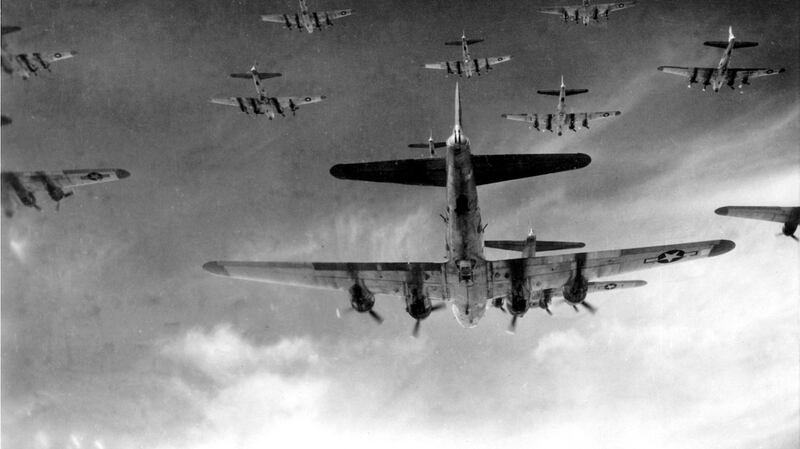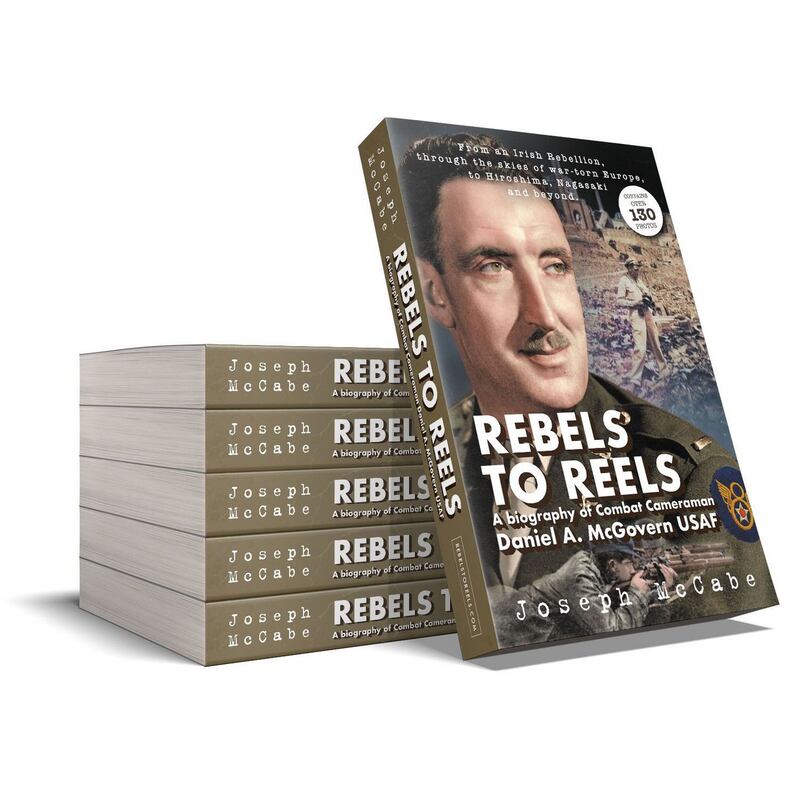One Monday morning in September in 1999 I was settling into the start of another busy week as a journalist in my home town of Carrickmacross in Monaghan when I received a phone call. It was our local librarian, Marita Hughes. She urged me to get myself down to the library as soon as I could as there was an American visitor there whom she strongly felt I should talk to. I didn’t know it then, but that phone call was the genesis of a biography which, on and off, would eventually take me over 20 years to research and write.
I have always been interested in history and in military history in particular. I read everything I could get my hands on since childhood. I’ve seen the war movies, been engrossed in the documentaries, built the Airfix models and visited the museums. I have been lucky enough also to visit many battle sites and to talk to the veterans of those military conflicts which still remain within living memory.
When I walked into Carrickmacross library that day I was met at the door by Marita who motioned me over to an elderly but remarkably tall man who was standing over a table a short distance away examining some local documents. I remarked the visitor had the unmistakable bearing of a military man.
“Joe, this is Lieutenant Colonel Daniel A McGovern of the United States Air Force. He tells me he is from Carrickmacross and he has an amazing story to tell you,” Marita said. Apart from a potentially amazing story, the mention of Lieutenant Colonel and United States Air Force immediately got my attention. I was intrigued.
Lt Col McGovern, then almost 90 years of age, greeted me warmly as we shook hands. We sat down and I commenced my interview. “You’re originally from the town here, colonel?” I enquired.
“Yes,” he replied. He explained that he had been born in Monaghan Town but had grown up in Carrickmacross. “We lived in the police barracks up the town there. My father was a sergeant here in the Royal Irish Constabulary,” he added. Col McGovern revealed that he had witnessed the War of Independence unfold in Carrickmacross. Now, I was captivated.

Things were fine at first, he explained, but as republican support grew, the entire McGovern family soon experienced the effects of the Dáil-led boycott of the RIC as the broader IRA military campaign intensified. “As the son of an RIC man it was difficult for me to get along with the other young fellows. They would often abuse me, kick me and gang up on me. I had to defend myself,” Dan pointed out. The McGoverns were eventually moved out of the barracks to a cottage elsewhere in the town. “That was because of the trouble,” he explained.
Then Dan recalled the nemesis of the IRA and the Sinn Féiners – the Black and Tans. “I used to ride with them as a boy on their Crossley Tenders, you, know. They became the dominating factor. They were a hard-drinking bunch of bastards who were ruthless in their approach,” he said.
Dan then related to me his account of a major IRA attack on Carrickmacross RIC barracks in 1921 before the Treaty was signed. He even had a vivid recollection of later witnessing his father handing over that same RIC barracks to the Irish Free State forces 100 years ago this year in 1922. With the foundation of the Irish Free State the McGoverns were obliged to leave Ireland on the direction of the IRA. They emigrated to the United States.
I learned that in America Dan eventually joined the then United States Army Air Corps. He told me about his remarkable career as an Air Force cameraman and photographer. Nothing prepared me for the list of historical events he witnessed and of the personalities he met and filmed along the way. It was just jaw dropping. So proficient had McGovern become in the use of both the motion picture and stills camera early in his career, for example, that he became a designated cameraman/photographer to none other than President Franklin Delano Roosevelt. This was shortly after Pearl Harbor when America had already entered the second World War.
Then, with the rapidly expanding and newly renamed US Army Air Forces starting to deploy to war theatres all over the world, combat cameramen were needed to record their efforts on deployment and most importantly in the air. A school was needed to train those cameramen. As the then Sergeant McGovern was the most senior USAAF cameraman available, he was hand-picked for the job by the Air Forces’ top brass and sent to Hollywood.

There, the 6ft 5in tall Big Mack, as he had become known, soon established the combat camera school and trained the very first intake of trainee combat cameramen. He recalled fondly how he worked with some of the best-known actors and directors in Hollywood as they lent their talents to the United States war effort for what was the duration of the war. These included actors Clark Gable and Ronald Reagan, with the latter going on to become another US president. “Reagan was a man that we all looked up to,” Dan explained. “He was always considerate to people and their problems and especially to the enlisted men,” he added.
Dan next flew on dangerous B-17 bombing missions over Nazi-occupied Europe with the US 8th Air Force. He revealed to me how he filmed considerable combat footage on B-17 bombers for Hollywood director William Wyler’s wartime documentary The Memphis Belle: A Story of A Flying Fortress. The 1990 feature film Memphis Belle was based on the original documentary on which he worked. Dan survived two crash-landings.
Then, in the first week of September 1945, as a lieutenant, he first entered Japan after that country had finally surrendered to the Allies after the dropping of the second atomic bomb on Nagasaki. He was among the very first Americans into the country where he filmed for a group of high-profile American and Allied press correspondents. “We tried to get into Japan earlier,” he informed me, “but MacArthur had decreed that nobody was to get in there before he did.” Dan would briefly meet General Douglas MacArthur later. He would film him often.

On September 9th, 1945 McGovern entered the ruins of Nagasaki with the correspondents. He found himself amid the cataclysmic scenes of death and destruction one month to the day after the Fat Man atomic bomb had been dropped on the city. He would film there and in Hiroshima and indeed all over a defeated Japan for the next eight months. McGovern was even present when former Japanese wartime premier, Hideki Tojo, attempted to take his own life after being tracked down by Allied authorities.
The footage shot by McGovern and by other cameraman later under his command in Japan, as well as many still photographs taken by him, now reside at the US National Archives. Much of this material represents the definitive film and photographic record we have today of the only time in history atomic weapons have been used in anger. However, as McGovern explained to me, those images of destruction and human suffering were suppressed by the US government. “That material was classified Secret, Restricted Data. It remained suppressed for decades. They just didn’t want that footage to get out,” he recalled.
Later, back in America, Dan McGovern filmed early American experiments of captured German V2 rockets with former Nazi scientist Wernher Von Braun as well as atomic test detonations in the Nevada desert and on Enewetok and Bikini Atolls in the Pacific. He was even involved in the Roswell Incident in which a UFO with aliens on board reputedly crashed in New Mexico. His insights into this and the many other historical events he witnessed and filmed were indeed extraordinary.
One thing above everything else struck me from that interview. Dan McGovern wanted his story told, not for any sense of self-gratification, but simply "for posterity" as he put it. It was also important to him that all cameramen and camerawomen who put themselves in harm's way to capture combat footage, be recognised for their efforts. To recognise Dan McGovern's efforts at least, I knew that day I simply had to write the full story of his fascinating life. The result is Rebels to Reels.
Rebels to Reels: A biography of Combat Cameraman Daniel A McGovern is available in hardback and paperback through bookstores worldwide.












